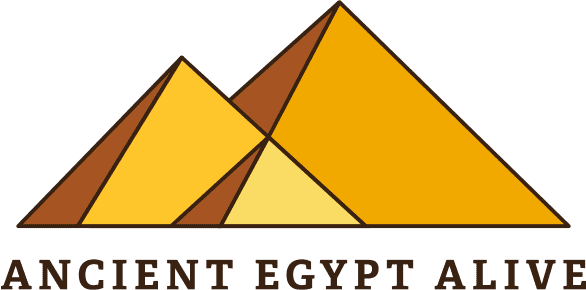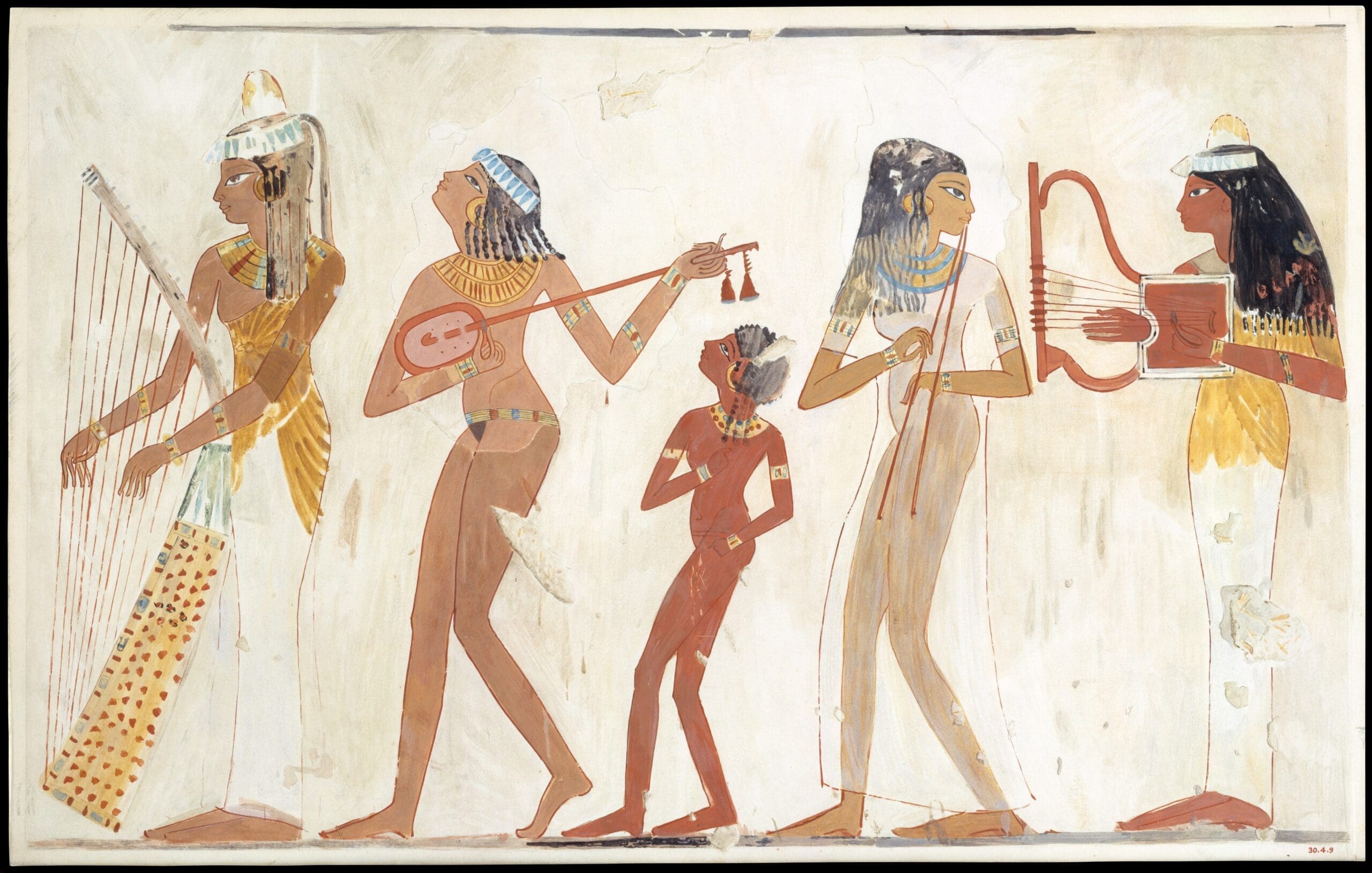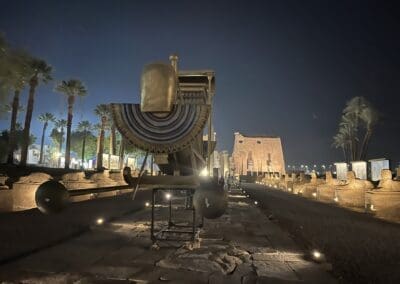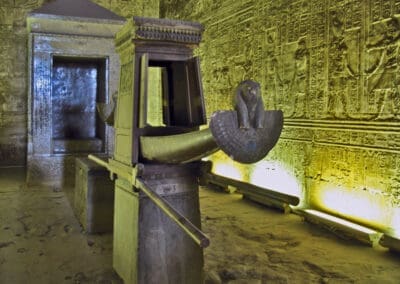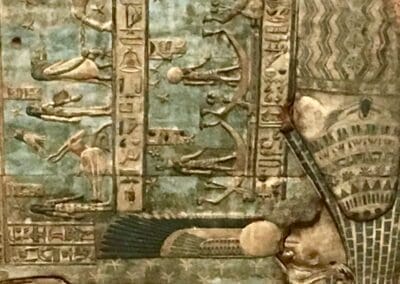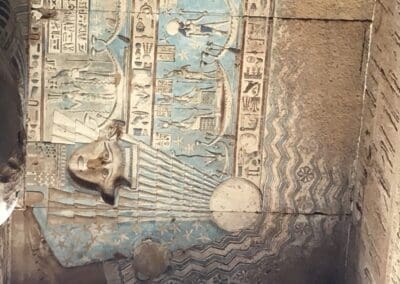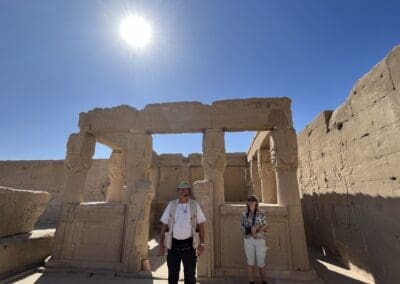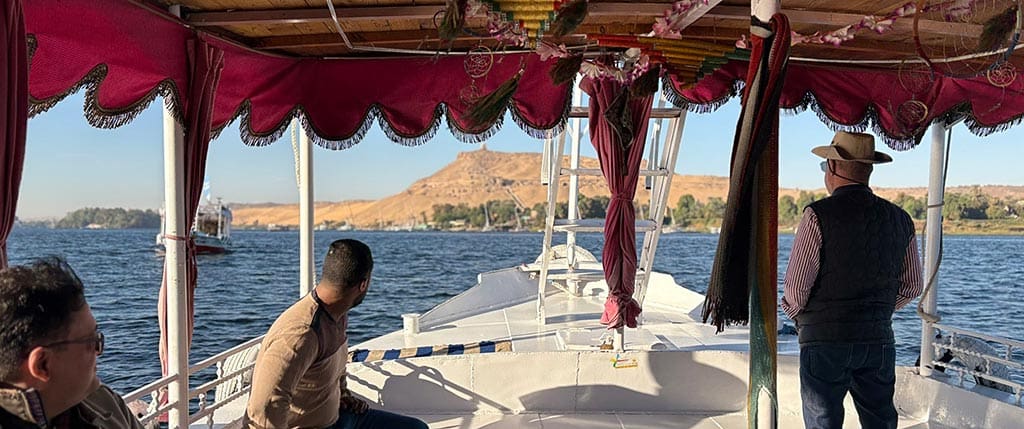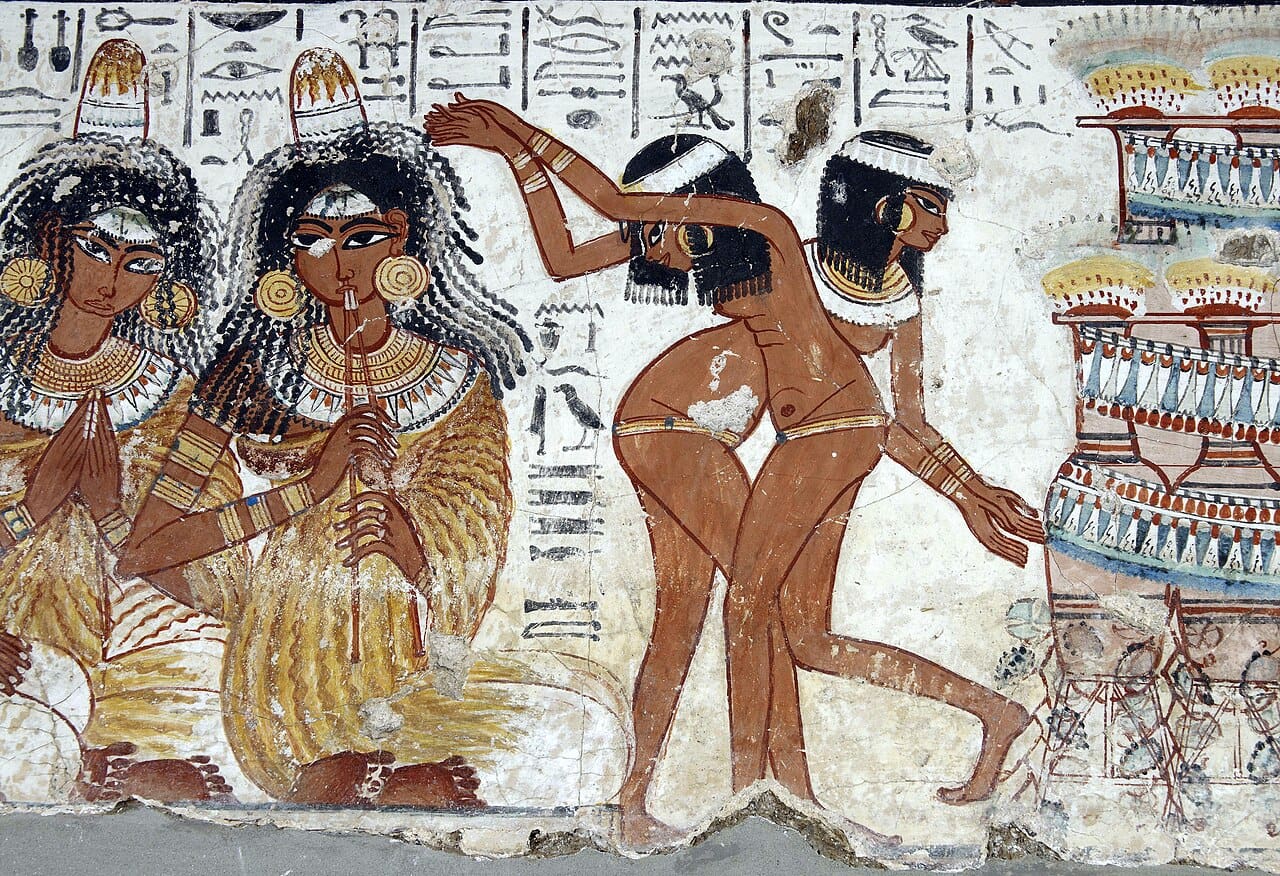Rituals, Renewals and Revelry Along the Nile
by Laura Ranieri Roy
Think of kicking up your heels, sipping copious amounts of beer, indulging in heavy carbs, and dancing the night away as a modern phenomenon? Well, think again! The ancient Egyptians were well ahead of the curve—3500 years ago and beyond. Their calendar was brimming with festivals, each with a special reason to celebrate—a god’s birthday, the honoring of the dead, …”drunkenness” pure and simple.
But it was during the summer months, when the Nile flooded and brought life to the land, that two monumental festivals truly lit up the country. Welcome to the ultimate ancient Egyptian summer parties!
Among the most significant and joyous were the Opet Festival and the New Year’s Festival, both blossoming during Egypt’s summer—when the fertile floodwaters of the Nile gave rise to a season of renewal. These festivals, while distinct, were united in purpose: to renew life, to unify the divine with the earthly, and to reaffirm ma’at, or divine order. They reflected the deep respect Egyptians had for the harmony between the spiritual and the natural world.
The Opet Festival: The Joyous Procession of Renewal
The Opet Festival was one of the grandest spectacles of the Theban religious calendar, designed to rejuvenate not only the pharaoh but the gods themselves. Amun, the king of the gods, was at the heart of this festival, and the ritual celebrated his sacred marriage to his consort, Mut. This divine union ensured the continued vitality of the pharaoh and the health of Egypt itself.
The festival was centered around a grand procession where the statues of Amun, Mut, and their son Khonsu, the moon god, were carried from Karnak Temple to Luxor Temple. The two-kilometer route, lined with the famous Avenue of the Sphinxes, was a massive spectacle filled with music, dancing, acrobats, and cheering crowds. Pharaohs like Hatshepsut and Ramses II made sure this procession was nothing short of extraordinary, creating unforgettable moments of divine renewal.
But the Opet Festival wasn’t just for the royals and priests—agriculturalists, who were taking a break from tending their fields during the Nile’s inundation, gathered to enjoy the revelry. There was beer, bread, and a whole lot of food to go around. And, for those lucky enough, they could even catch a glimpse of the holy triad as they processed in their barque shrine. Even better? You might receive an oracle! If you had a question, the priests would move the barque forward for “yes” and backward for “no.” Just make sure you made a good impression on those priests!
The New Year’s Festival at Dendera: Opening of the Year at the Beginning of the Flood Season
Now, if the Opet Festival wasn’t enough to fill the summer, let’s talk about the New Year’s Festival. Held at the magnificent Hathor Temple in Dendera, this festival aligned with the rising of Sirius and the start of the Nile’s annual inundation. It was not just about farming; this was a cosmic celebration where the divine and earthly realms met.
Hathor, the goddess of love, joy, fertility, music, and a whole list of other wonderful things, took center stage. During the festival, her statue was carried from one of the temple’s crypts up the western staircase, where it would receive the first rays of the rising sun. This symbolic act represented Hathor’s union with the sun god, rejuvenating not only the goddess herself but also Egypt’s land and people. The return of the statue down the eastern staircase mirrored the cyclical nature of life—always renewing, always returning to its source.
Pilgrims traveled from far and wide to attend these rituals, and similar ceremonies took place at temples like Edfu, where the statue of Horus was carried to a roof shrine. This was truly a spectacular festival, where the spiritual rebirth of the land was symbolized by the sun’s rays illuminating the gods’ statues, renewing their divine power.
Summer in Ancient Egypt: A Season of Joy and Transformation
The summer months, marked by the rising Nile, were not just about agricultural renewal—they were spiritual moments of transformation. The festivals of Opet and New Year’s were more than just parties; they were profound rituals that connected the gods and the people, nature’s rhythms and human existence.
Legacy and Reflection
The Opet and New Year’s festivals endured for centuries, evolving with new dynasties but always holding onto their core themes of renewal, unity, and divine favor. Today, echoes of these ancient celebrations can still be felt in modern festivals along the Nile. As the sun sets over the temples of Karnak and Luxor, the spirit of those joyous summer days lives on—an eternal rhythm of river, star, and sun, all moving in harmony to renew Egypt once more.
Join the Party—Egyptian Style!
So, next time you’re sipping a summer drink or dancing into the night, remember: the ancient Egyptians were throwing legendary parties long before us. While we may not have gilded statues or a river as majestic as the Nile, we can still celebrate the joy of renewal, connection, and a little divine favor. The Nile’s eternal rhythm has its way of bringing us all back to life. What can we take away from these ancient Egyptian festivals? While you might not be chowing down on heavy carbs or doing acrobatic flips, we can certainly all relate to how this season of sunshine is a time for relaxation, joyous gatherings, and recharging our batteries—so we, too, can return refreshed, rejuvenated, and inspired.
